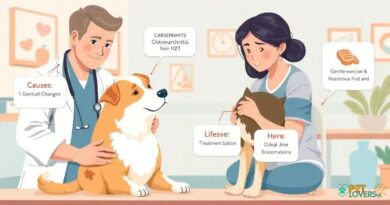What is Neat Grooming Techniques
Understanding Neat Grooming Techniques
Neat grooming techniques refer to the various methods and practices used to maintain the cleanliness and appearance of dogs. These techniques not only enhance the aesthetic appeal of your pet but also contribute significantly to their overall health and well-being. Regular grooming helps in the early detection of skin issues, parasites, and other health concerns, making it an essential part of responsible pet ownership.
The Importance of Regular Grooming
Regular grooming is crucial for all dog breeds, regardless of their coat type. Neat grooming techniques help to remove dirt, debris, and loose fur, which can accumulate and lead to skin irritations or infections. Additionally, grooming sessions provide an opportunity for bonding between the pet and the owner, fostering trust and affection. This routine can also help dogs become accustomed to being handled, making veterinary visits and other care procedures less stressful.
Essential Tools for Neat Grooming
To achieve neat grooming results, having the right tools is essential. Common grooming tools include brushes, combs, clippers, and scissors. The type of tools you need may vary depending on your dog’s breed and coat type. For instance, long-haired breeds may require slicker brushes and wide-toothed combs, while short-haired breeds might benefit from rubber brushes that help remove loose hair and stimulate the skin.
Brushing Techniques for Different Coat Types
Brushing is a fundamental aspect of neat grooming techniques. For dogs with long hair, it is important to brush from the roots to the tips, ensuring that all tangles and mats are removed. For short-haired breeds, a gentle rub with a rubber brush can help remove loose fur and distribute natural oils throughout the coat. Understanding the specific brushing techniques for your dog’s coat type is vital for effective grooming.
Bathing Your Dog: Best Practices
Bathing is another key component of neat grooming techniques. It is important to use a dog-specific shampoo to avoid skin irritation. The frequency of baths depends on the dog’s activity level and coat type; generally, every 4 to 6 weeks is sufficient. During the bath, ensure that you rinse thoroughly to remove all soap residue, as leftover shampoo can lead to skin problems. Always dry your dog properly after bathing to prevent chills.
Nail Trimming: A Crucial Grooming Step
Nail trimming is often overlooked but is an essential part of neat grooming techniques. Overgrown nails can cause discomfort and lead to mobility issues. It is recommended to trim your dog’s nails every 3 to 4 weeks. Using the right tools, such as dog nail clippers or grinders, can make the process easier. If you’re unsure about how to trim your dog’s nails safely, consider consulting a professional groomer or veterinarian.
Ear and Eye Care in Grooming
Part of neat grooming techniques involves regular ear and eye care. Dogs with floppy ears are more prone to ear infections, so it’s important to check their ears regularly for dirt and wax buildup. Use a vet-recommended ear cleaner to keep them clean. Similarly, keeping the area around the eyes clean can prevent tear staining and irritation. A damp cloth can be used to gently wipe away any discharge.
Dealing with Shedding: Effective Strategies
Shedding can be a challenge for many dog owners, but neat grooming techniques can help manage it effectively. Regular brushing not only removes loose fur but also reduces the amount of hair that ends up on your furniture and clothing. Additionally, using de-shedding tools can be beneficial for breeds that shed heavily. Maintaining a healthy diet and hydration can also contribute to a healthier coat, reducing excessive shedding.
Professional Grooming: When to Consider It
While many grooming tasks can be done at home, there are times when professional grooming is advisable. If your dog has a complex coat that requires specialized techniques, or if you feel uncomfortable performing certain grooming tasks, seeking the help of a professional groomer can be beneficial. Professional groomers are trained to handle various breeds and can provide services such as breed-specific cuts, which may be challenging to achieve at home.
Creating a Grooming Schedule
Establishing a grooming schedule is an effective way to ensure that your dog’s grooming needs are consistently met. Depending on your dog’s breed and coat type, you may need to groom daily, weekly, or monthly. Keeping a calendar or setting reminders can help you stay on track. Regular grooming not only keeps your dog looking neat but also strengthens your bond and ensures their health and happiness.




